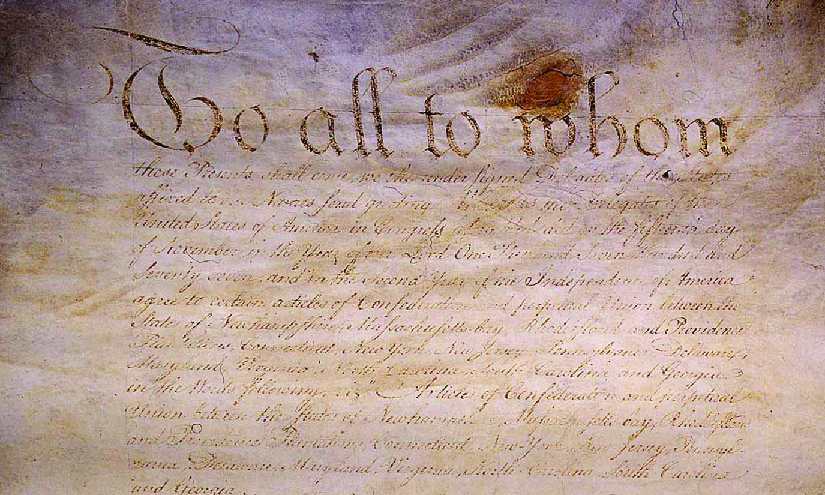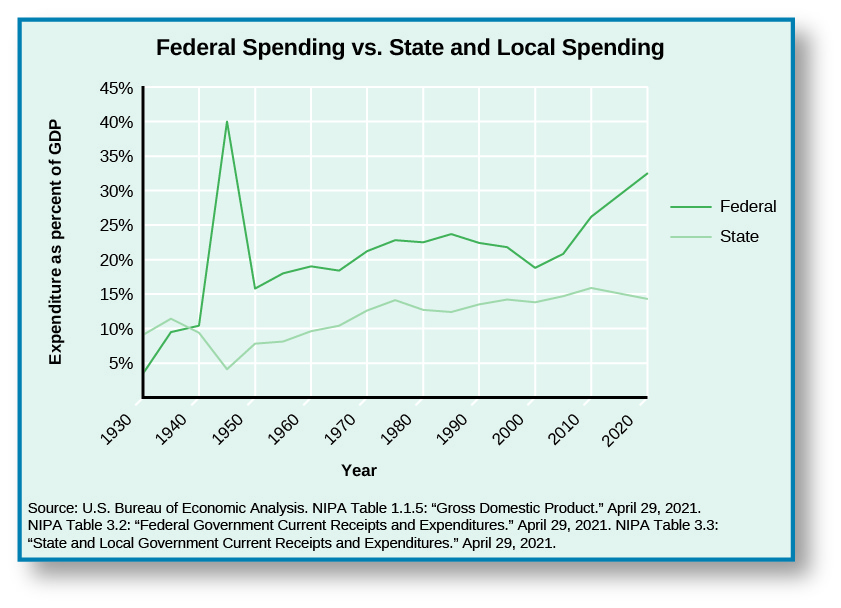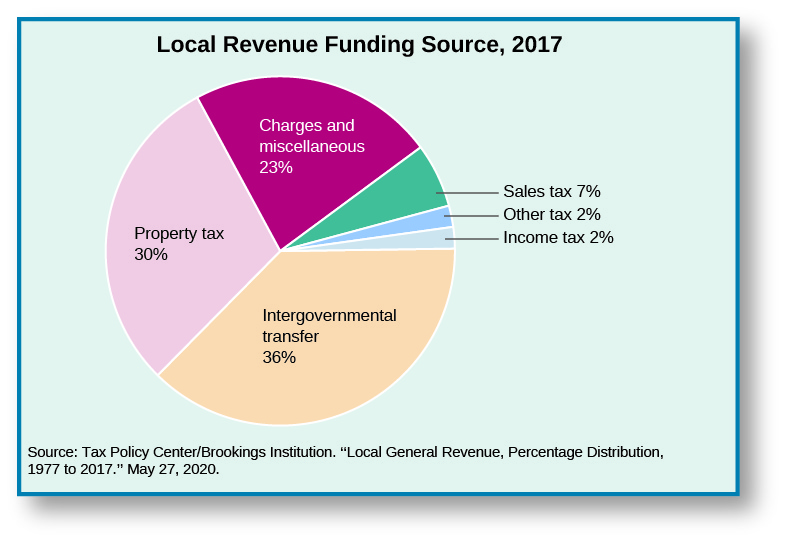14.2: State Power and Delegation
- Page ID
- 153738
\( \newcommand{\vecs}[1]{\overset { \scriptstyle \rightharpoonup} {\mathbf{#1}} } \)
\( \newcommand{\vecd}[1]{\overset{-\!-\!\rightharpoonup}{\vphantom{a}\smash {#1}}} \)
\( \newcommand{\id}{\mathrm{id}}\) \( \newcommand{\Span}{\mathrm{span}}\)
( \newcommand{\kernel}{\mathrm{null}\,}\) \( \newcommand{\range}{\mathrm{range}\,}\)
\( \newcommand{\RealPart}{\mathrm{Re}}\) \( \newcommand{\ImaginaryPart}{\mathrm{Im}}\)
\( \newcommand{\Argument}{\mathrm{Arg}}\) \( \newcommand{\norm}[1]{\| #1 \|}\)
\( \newcommand{\inner}[2]{\langle #1, #2 \rangle}\)
\( \newcommand{\Span}{\mathrm{span}}\)
\( \newcommand{\id}{\mathrm{id}}\)
\( \newcommand{\Span}{\mathrm{span}}\)
\( \newcommand{\kernel}{\mathrm{null}\,}\)
\( \newcommand{\range}{\mathrm{range}\,}\)
\( \newcommand{\RealPart}{\mathrm{Re}}\)
\( \newcommand{\ImaginaryPart}{\mathrm{Im}}\)
\( \newcommand{\Argument}{\mathrm{Arg}}\)
\( \newcommand{\norm}[1]{\| #1 \|}\)
\( \newcommand{\inner}[2]{\langle #1, #2 \rangle}\)
\( \newcommand{\Span}{\mathrm{span}}\) \( \newcommand{\AA}{\unicode[.8,0]{x212B}}\)
\( \newcommand{\vectorA}[1]{\vec{#1}} % arrow\)
\( \newcommand{\vectorAt}[1]{\vec{\text{#1}}} % arrow\)
\( \newcommand{\vectorB}[1]{\overset { \scriptstyle \rightharpoonup} {\mathbf{#1}} } \)
\( \newcommand{\vectorC}[1]{\textbf{#1}} \)
\( \newcommand{\vectorD}[1]{\overrightarrow{#1}} \)
\( \newcommand{\vectorDt}[1]{\overrightarrow{\text{#1}}} \)
\( \newcommand{\vectE}[1]{\overset{-\!-\!\rightharpoonup}{\vphantom{a}\smash{\mathbf {#1}}}} \)
\( \newcommand{\vecs}[1]{\overset { \scriptstyle \rightharpoonup} {\mathbf{#1}} } \)
\( \newcommand{\vecd}[1]{\overset{-\!-\!\rightharpoonup}{\vphantom{a}\smash {#1}}} \)
\(\newcommand{\avec}{\mathbf a}\) \(\newcommand{\bvec}{\mathbf b}\) \(\newcommand{\cvec}{\mathbf c}\) \(\newcommand{\dvec}{\mathbf d}\) \(\newcommand{\dtil}{\widetilde{\mathbf d}}\) \(\newcommand{\evec}{\mathbf e}\) \(\newcommand{\fvec}{\mathbf f}\) \(\newcommand{\nvec}{\mathbf n}\) \(\newcommand{\pvec}{\mathbf p}\) \(\newcommand{\qvec}{\mathbf q}\) \(\newcommand{\svec}{\mathbf s}\) \(\newcommand{\tvec}{\mathbf t}\) \(\newcommand{\uvec}{\mathbf u}\) \(\newcommand{\vvec}{\mathbf v}\) \(\newcommand{\wvec}{\mathbf w}\) \(\newcommand{\xvec}{\mathbf x}\) \(\newcommand{\yvec}{\mathbf y}\) \(\newcommand{\zvec}{\mathbf z}\) \(\newcommand{\rvec}{\mathbf r}\) \(\newcommand{\mvec}{\mathbf m}\) \(\newcommand{\zerovec}{\mathbf 0}\) \(\newcommand{\onevec}{\mathbf 1}\) \(\newcommand{\real}{\mathbb R}\) \(\newcommand{\twovec}[2]{\left[\begin{array}{r}#1 \\ #2 \end{array}\right]}\) \(\newcommand{\ctwovec}[2]{\left[\begin{array}{c}#1 \\ #2 \end{array}\right]}\) \(\newcommand{\threevec}[3]{\left[\begin{array}{r}#1 \\ #2 \\ #3 \end{array}\right]}\) \(\newcommand{\cthreevec}[3]{\left[\begin{array}{c}#1 \\ #2 \\ #3 \end{array}\right]}\) \(\newcommand{\fourvec}[4]{\left[\begin{array}{r}#1 \\ #2 \\ #3 \\ #4 \end{array}\right]}\) \(\newcommand{\cfourvec}[4]{\left[\begin{array}{c}#1 \\ #2 \\ #3 \\ #4 \end{array}\right]}\) \(\newcommand{\fivevec}[5]{\left[\begin{array}{r}#1 \\ #2 \\ #3 \\ #4 \\ #5 \\ \end{array}\right]}\) \(\newcommand{\cfivevec}[5]{\left[\begin{array}{c}#1 \\ #2 \\ #3 \\ #4 \\ #5 \\ \end{array}\right]}\) \(\newcommand{\mattwo}[4]{\left[\begin{array}{rr}#1 \amp #2 \\ #3 \amp #4 \\ \end{array}\right]}\) \(\newcommand{\laspan}[1]{\text{Span}\{#1\}}\) \(\newcommand{\bcal}{\cal B}\) \(\newcommand{\ccal}{\cal C}\) \(\newcommand{\scal}{\cal S}\) \(\newcommand{\wcal}{\cal W}\) \(\newcommand{\ecal}{\cal E}\) \(\newcommand{\coords}[2]{\left\{#1\right\}_{#2}}\) \(\newcommand{\gray}[1]{\color{gray}{#1}}\) \(\newcommand{\lgray}[1]{\color{lightgray}{#1}}\) \(\newcommand{\rank}{\operatorname{rank}}\) \(\newcommand{\row}{\text{Row}}\) \(\newcommand{\col}{\text{Col}}\) \(\renewcommand{\row}{\text{Row}}\) \(\newcommand{\nul}{\text{Nul}}\) \(\newcommand{\var}{\text{Var}}\) \(\newcommand{\corr}{\text{corr}}\) \(\newcommand{\len}[1]{\left|#1\right|}\) \(\newcommand{\bbar}{\overline{\bvec}}\) \(\newcommand{\bhat}{\widehat{\bvec}}\) \(\newcommand{\bperp}{\bvec^\perp}\) \(\newcommand{\xhat}{\widehat{\xvec}}\) \(\newcommand{\vhat}{\widehat{\vvec}}\) \(\newcommand{\uhat}{\widehat{\uvec}}\) \(\newcommand{\what}{\widehat{\wvec}}\) \(\newcommand{\Sighat}{\widehat{\Sigma}}\) \(\newcommand{\lt}{<}\) \(\newcommand{\gt}{>}\) \(\newcommand{\amp}{&}\) \(\definecolor{fillinmathshade}{gray}{0.9}\)By the end of this section, you will be able to:
- Explain how the balance of power between national and state governments shifted with the drafting and ratification of the Constitution
- Identify parts of the Constitution that grant power to the national government and parts that support states’ rights
- Identify two fiscal policies by which the federal government exerts control over state policy decisions
When the framers met at the Constitutional Convention in 1787, they had many competing tensions to resolve. For instance, they had to consider how citizens would be represented in the national government, given population differences between the states. In addition, they had to iron out differences of opinion about where to concentrate political power. Would the legislative branch have more authority than the executive branch, and would state governments retain as many rights as they had enjoyed under the Articles of Confederation?
Here we look at the manner in which power was divided between the national and state governments, first under the Articles of Confederation and then under the U.S. Constitution. As you read, observe the shifting power dynamic between the national government and subnational governments at the state and local level.
State Power at the Founding
Before the ratification of the Constitution, the state governments’ power far exceeded that held by the national government. This distribution of authority was the result of a conscious decision and was reflected in the structure and framework of the Articles of Confederation. The national government was limited, lacking both a president to oversee domestic and foreign policy and a system of federal courts to settle disputes between the states.
Given the inherent weaknesses in the system set up by the Articles, in 1787 the delegates came together once again to consider amendments to the Articles, but they ended up instead considering a new design for the government (Figure 14.2). To produce more long-term stability, they needed to establish a more effective division of power between the federal and state governments. Ultimately, the framers settled on a system in which power would be shared: The national government had its core duties, the state governments had their duties, and other duties were shared equally between them. Today this structure of power sharing is referred to as federalism.

The Constitution allocated more power to the federal government by effectively adding two new branches: a president to head the executive branch and the Supreme Court to head the judicial branch. The specific delegated or expressed powers granted to Congress and to the president were clearly spelled out in the body of the Constitution under Article I, Section 8, and Article II, Sections 2 and 3.
In addition to these expressed powers, the national government was given implied powers that, while not clearly stated, are inferred. These powers stem from the elastic clause in Article I, Section 8, of the Constitution, which provides Congress the authority “to make all Laws which shall be necessary and proper for carrying into Execution the Foregoing powers.” This statement has been used to support the federal government’s playing a role in controversial policy matters, such as the provision of healthcare, the expansion of power to levy and collect taxes, and regulation of interstate commerce. Finally, Article VI declared that the U.S. Constitution and any laws or treaties made in connection with that document were to supersede constitutions and laws made at the state level. This clause, better known as the supremacy clause, makes clear that any conflict in law between the central (or federal) government and the regional (or state) governments is typically resolved in favor of the central government.
Although the U.S. Constitution clearly allocated more power to the federal government than had been the case under the Articles of Confederation, the framers still respected the important role of the states in the new government. The states were given a host of powers independent of those enjoyed by the national government. As one example, they now had the power to establish local governments and to account for the structure, function, and responsibilities of these governments within their state constitutions. This gave states sovereignty, or supreme and independent authority, over county, municipal, school and other special districts.
States were also given the power to ratify amendments to the U.S. Constitution. Throughout U.S. history, all amendments to the Constitution except one have been proposed by Congress and then ratified by either three-fourths of the state legislatures or three-fourths of the state conventions called for ratification purposes. This process ensures that the states have a voice in any changes to the Constitution. The Twenty-First Amendment (repealing the Eighteenth Amendment’s prohibition on alcohol) was the only amendment ratified using the state ratifying convention method. Although this path has never been taken, the U.S. Constitution even allows for state legislatures to take a direct and very active role in the amendment proposal process. If at least two-thirds of the state legislatures apply for a national convention, constitutional amendments can be proposed at the convention.
Debating the Need for a National Convention
As of 2020, fifteen states had passed applications to hold a national convention. These states are pushing for the opportunity to propose a constitutional amendment requiring the national government to balance its budget in the same way most states are mandated to do. For a national convention to be held, at least thirty-four states must submit applications. Thus, nineteen more states would be needed to hold the first national convention in U.S. history.3
Proponents see the convention as an opportunity to propose an amendment they argue is necessary to reduce federal spending and promote fiscal responsibility. The exploding Federal budget deficit adds to these concerns and may create more support for such a process. If not, proponents nevertheless believe the growing roster of states favoring a convention may encourage Congress to take action on its own.
Opponents feel a balanced budget amendment is not realistic given the need for emergency spending in the event of an economic recession. They also worry about the spending cuts and/or tax increases the federal government would have to impose to consistently balance the budget. Some states fear a balanced-budget requirement would limit the federal government’s ability to provide them with continued fiscal support. Finally, other opponents argue that states balance only their operating budgets, while themselves assuming massive amounts of debt for capital projects.
But perhaps the greatest fear is of the unknown. A national convention is unprecedented, and there is no limit to the number of amendments delegates to such a convention might propose. However, such changes would still need to be ratified by three-fourths of the state legislatures or state conventions before they could take effect.
What are the potential benefits of a national constitutional convention? What are the risks? Are the benefits worth the risks? Why or why not?
Despite the Constitution’s broad grants of state authority, one of the central goals of the Anti-Federalists, a group opposed to several components of the Constitution, was to preserve state government authority, protect the small states, and keep government power concentrated in the hands of the people. For this reason, the Tenth Amendment was included in the Bill of Rights to create a class of powers, known as reserved powers, exclusive to state governments. The amendment specifically reads, “The powers not delegated to the United States by the Constitution, nor prohibited by it to the States, are reserved to the States respectively, or to the people.” In essence, if the Constitution does not decree that an activity should be performed by the national government and does not restrict the state government from engaging in it, then the state is seen as having the power to perform the function. In other words, the power is reserved to the states.
Besides reserved powers, the states also retained concurrent powers, or responsibilities shared with the national government. As part of this package of powers, the state and federal governments each have the right to collect income tax from their citizens and corporate tax from businesses. They also share responsibility for building and maintaining the network of interstates and highways and for making and enforcing laws (Figure 14.3). For instance, many state governments have laws regulating motorcycle and bicycle helmet use, banning texting and driving, and prohibiting driving under the influence of drugs or alcohol.

The Evolution of State Power
As the federal government’s role in policy creation expanded, so did its level of spending. Spending by the federal government began to surpass that of state and local governments shortly after 1940 (Figure 14.4). It spiked temporarily during the Great Depression and again during World War II, resuming a slow climb with the implementation of Johnson’s Great Society programs noted above.

Growing financial resources gave the federal government increased power over subnational governments. This increased power was because it could use categorical grants to dictate the terms and conditions state governments had to meet to qualify for financial assistance in a specific policy area. Over time, the federal government even began to require state and local governments to comply with legislative and executive authorizations when funding was not attached. These requests from the federal government are referred to as unfunded mandates and are a source of dissatisfaction to political actors at the state and local level. To provide more transparency to state and local governments and reduce the federal government’s use of mandates, the Unfunded Mandates Reform Act was passed in 1995. This act requires the Congressional Budget Office to provide information about the cost of any proposed government mandate that exceeds a specified threshold before the bill can be considered in Congress.8
Explore the latest news on federal mandates at the Congressional Budget Office and the Catalog of Cost Shifts to States at the National Conference of State Legislatures website.
Since then, states have been granted the flexibility to set policy across a number of controversial policy areas. For instance, a wide array of states require parental consent for abortions performed on minors, set waiting periods before an abortion can be performed, or require patients to undergo an ultrasound before the procedure. As another example, currently, almost half the states allow for the use of medical marijuana and three states have fully legalized it, despite the fact that this practice stands in contradiction to federal law that prohibits the use and distribution of marijuana.
For more on these two controversial policy areas, explore ”An Overview of State Abortion Laws” and ”State Medical Marijuana Laws.”
Today, it is not uncommon to see a patchwork of legal decisions granting states more discretion in some policy areas, such as marijuana use, while providing the federal government more authority in others, such as same-sex marriage. Decisions about which level controls policy can reflect the attitudes of government officials and the public, political ideology and the strategic advantage of setting policy on a state-by-state basis, and the necessity of setting uniform policy in the face of an economic downturn or unanticipated national security threat. What has not changed over time is the central role of the U.S. Supreme Court’s views in determining how power should be distributed in a federalist system.
Power at the Substate Level
The U.S. Constitution is silent on the dispersion of power between states and localities within each state. The fact that states are mentioned specifically and local jurisdictions are not has traditionally meant that power independent of the federal government resides first with the state. Through their own constitutions and statutes, states decide what to require of local jurisdictions and what to delegate. This structure represents the legal principle of Dillon’s Rule, named for Iowa Supreme Court justice John F. Dillon. Dillon argued that state actions trump those of the local government and have supremacy.10 In this view, cities and towns exist at the pleasure of the state, which means the state can step in and dissolve them or even take them over. Indeed, most states have supremacy clauses over local governments in their constitutions.
Like state governments, local governments prioritize spending on building and maintaining the transportation infrastructure, supporting educational institutions, promoting community protection, and funding healthcare.13 As shown in Figure 14.5, local governments, just like state governments, receive a sizeable chunk of their revenue from grants and transfers from other levels of the government. The next biggest source of revenue for local governments is property tax collections.

Property taxes can be assessed on homes, land, and businesses. The local government’s reliance on property tax revenue can be problematic for a number of reasons. First, unlike sales tax, the collection of which is spaced out in small increments across multiple transactions, property tax is collected in one or two lump sums and is therefore highly visible and unpopular.14 In fact, in response to tax rate increases, many states have placed legal or constitutional limits on regional governments’ ability to raise property taxes. The trend began in California with the 1978 passage of Proposition 13. This citizen-driven initiative capped the real estate tax at 1 percent of the cash value of property and stopped the practice of reassessing properties for tax purposes whenever a home in the neighborhood was sold.15 After its passage, a number of other states followed suit, making it more difficult for states to reap the rewards of sharp increases in the market value of property. And, of course, not reassessing properties for tax purposes unless a home is sold leads to massive disparities in amounts paid by neighbors living in similar houses in the same neighborhood.16
Another drawback to local governments’ reliance on property tax is that property values vary with the economic health of a given area, the quality of school districts, and the overall desirability of a state, municipality, or county. Significant parcels of land in many cities are also tax-exempt, including property occupied by colleges, churches, and other nonprofit organizations. Boston is a good example as almost 50 percent of the assessed value of property is tax-exempt.17 College towns face the same challenge.
When the mortgage crisis began in 2007, property values decreased in many areas of the country, and many homeowners defaulted on their mortgages because their homes were now worth less than they had borrowed to buy them. With the decline in property values, local governments faced a loss in tax revenue at the same time states were cutting back on aid; tax collections were also down because of economic conditions and the inability to derive income tax from internet sales. A number of municipalities filed for bankruptcy in the face of fiscal distress during the economic recession. Perhaps the best known municipality was Detroit, Michigan, which filed for Chapter 9 bankruptcy in 2013 (Figure 14.6).

Detroit filed for bankruptcy due to massive debt obligations and demands for repayment that it could not meet due to a perfect storm of economic and democratic factors. The city owed money to investors who had loaned it money, and it had liabilities resulting from its failure to fulfill its pension and healthcare obligations to city workers. The bankruptcy allowed the city time to develop an exit strategy and negotiate with creditors and union representatives in an effort to restructure its debt load.18 Indeed, Detroit recently emerged from bankruptcy and has started to rebuild economically.
Detroit’s fiscal condition only highlights the unique challenges municipalities face. Local governments have to provide many of the same services as state and national governments, but they are often constrained by the boundaries the state prescribes. They may not have the authority to raise revenue above a certain threshold, and they do not have the ability to pass expenses on to another level of government because they lack sovereignty.


